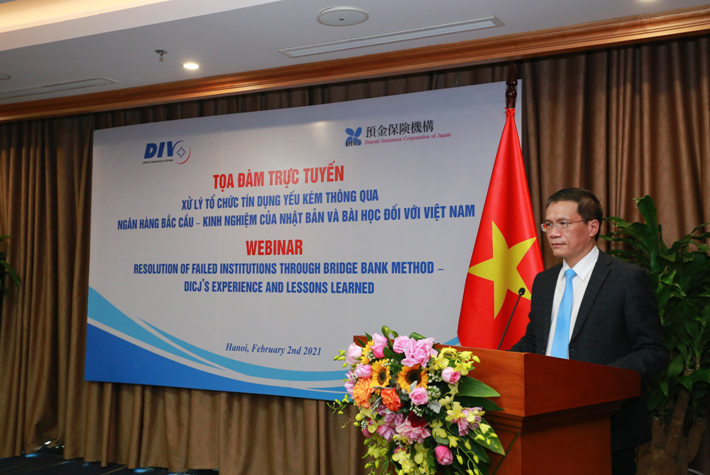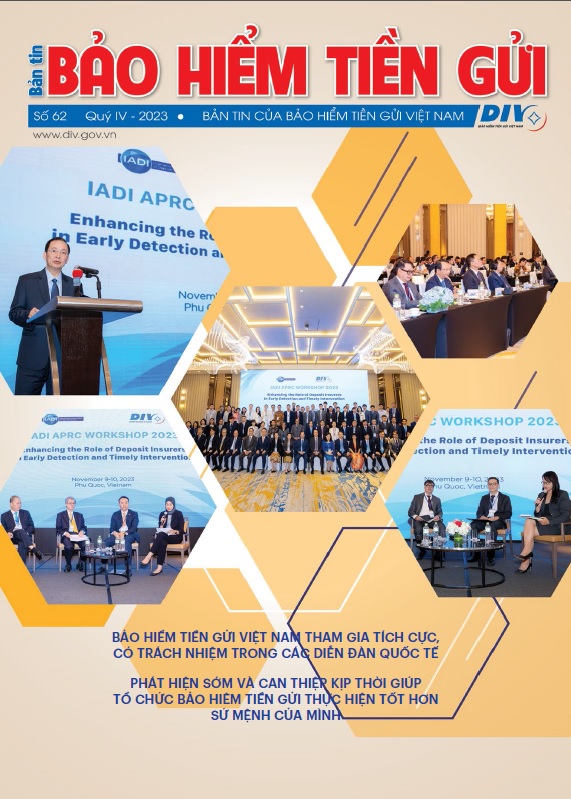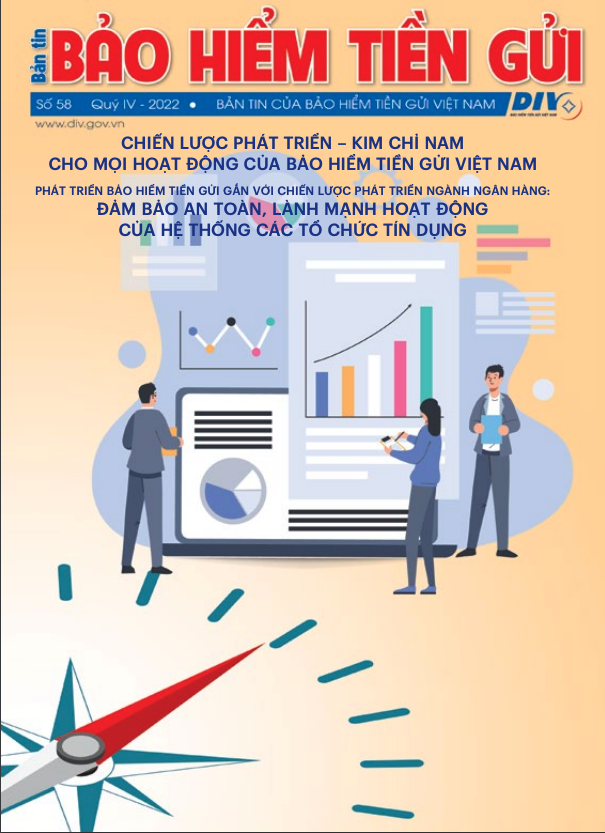Attended the webinar were Mr. Pham Bao Lam – DIV’s Chairman of the Board of Directors and other members of the Board of Directors; Mr. Dao Quoc Tinh – General Director and other members of the Board of Management; Controllers; members of the Working Group on resolution of weak credit institutions (CIs) through bridge bank method.
On the DICJ side, there were Mr. Katsunori MIKUNIYA – Governor; Mr. Takamasa HISADA – Deputy Governor; Mr. Mitsumasa YANO – Deputy Executive Director, Resolution and Financial Revitalization Department – speaker and other delegates from DICJ.

Mr. Pham Bao Lam – DIV’s Chairman of the Board of Directors gave a speech at the webinar
Speaking at the webinar, Mr. Pham Bao Lam – DIV’s Chairman of the Board of Directors revealed that the DIV’s role in the restructuring process of CIs has been strengthened in recent years. It is stated in the Development Strategy of Vietnam Banking Sector to 2025, with orientations to 2030 that the DIV is responsible to effectively participate in the restructuring process of weak CIs. In order to best fulfill this mission, the DIV has been conducting research to propose methods of resolution of weak CIs, in which bridge bank is considered an effective one.
Also according to Chairman Pham Bao Lam, international best practices have become an important and useful source of information for DIV’s reference in this area. DICJ is among deposit insurance institutions which have been effectively implementing resolution of financial institutions through bridge banks. Aiming to acquire in-depth knowledge of resolution through bridge banks, the DIV organized the webinar on “Resolution of failed institutions through bridge bank method – DICJ experience and lessons learned” in cooperation with DICJ. Through the webinar, DIV officers learned DICJ’s best practices in this method of resolution.
The webinar mainly focused on 03 subjects including: Overview of the bank resolution framework in Japan; Resolution using a bridge bank; and Resolution and Collection Corporation. Resolution process with or without systemic risk, DICJ’s forms of financial assistance, crisis management measures and the role of the Financial Crisis Response Council were presented by DICJ speakers at the webinar.
Besides, resolution procedures through bridge banks, resolution procedures of the Resolution and Collection Corporation and its collection policy

























